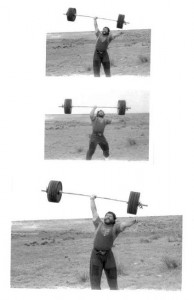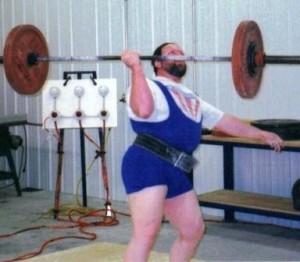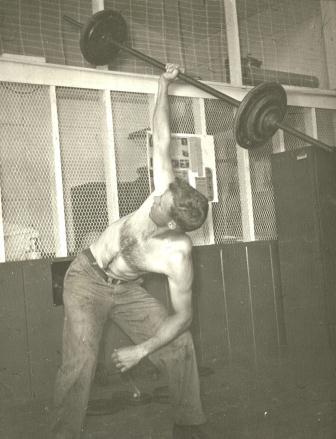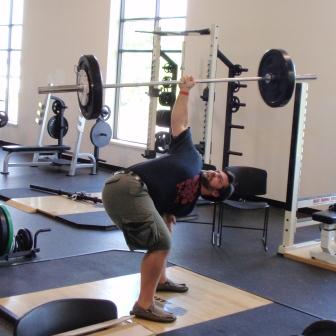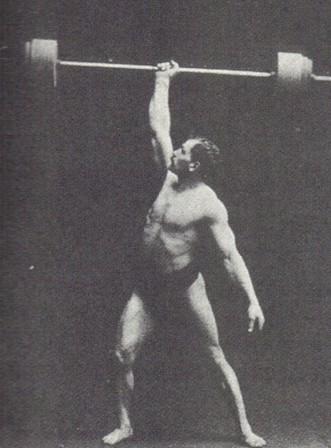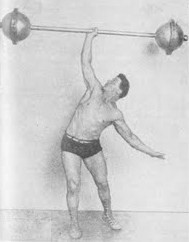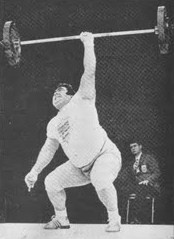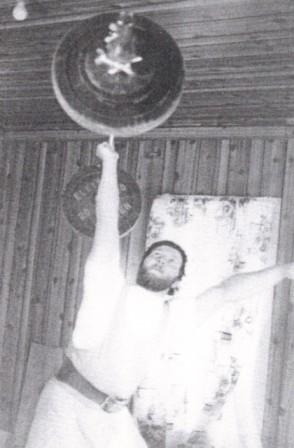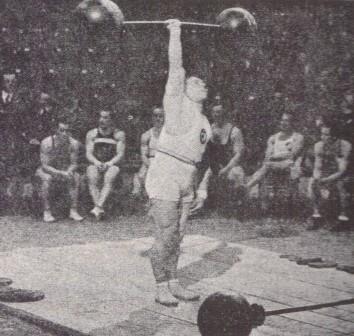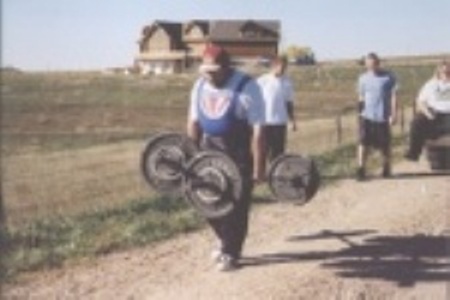Bob Burtzloff on Training (circa 1981)
by Thom Van Vleck
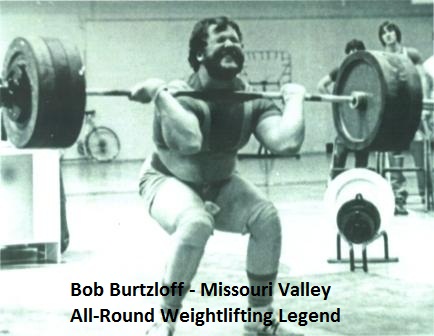
Bob Burtzloff participated in Olympic Weightlifting as well as All Round Weightlifting. He was multiple times Kansas State Champ in Olympic Lifting.
Most everyone that has been around the USAWA any amount of time knows who Bob Burtzloff is and what a great champion he has been and continues to be. Some of the older USAWA lifters may think of Bob’s great Bent Pressing, One Arm Clean & Jerk, or his Steinborn. Bob has some great accomplishments. In my book, his greatest accomplishment was beating Wilbur Miller’s Clean and Jerk record.
The training information below was relayed in 1981 to Bill Clark from a man Bill described as a “23 year old 242lb Bricklayer”. I personally think the wisdom Bob relays is timeless and what he views as most important is what most lifters miss out on in their search for the “magic routine”.
Bob wrote:
“My workout is not fancy, but it helped me. I pick a certain number of exercises to do in a workout. I usually do at least three differenet movements. Sometimes more depending on time and energy. I pick a weight and number of reps that I want to do in the exercise. For example, if I’m doing snatches with 250, I would do 15 total reps, regardless of the number of sets it takes. I have used this type of routine for up to 50 reps, although 15 total reps works best for me. I once did 50 jerks with 320, but was sore for a week. Still, the work allowed me to break Wilbur Miller’s Clean & Jerk record only 10 days after the training effort. Here’s and example of some of my best heavy workouts:
C&J – 363 X 15, 320X 50 total
Front Squat – 385 X 15 total
Snatches – 220 X 15, 231 X 15, 241 X 15, 251 X 15, 251 X 1, 271 X 1 – all in the same workout.
Bench – 360 X 15 total
Military Press – 231 X15 total
One Hand C&J – 203 X 15 total
I believe that desire and mental attitude are more important in making gains than any particular workout routine. One must have a strong desire to accomplish what he sets out to do or he’ll quit when things get tough. A strong, unyielding desire to succeed is essential in maintaining a positive mental attitude. If a person has a positive outlook on training, he will be able to work harder and with heavier weights. Many people allow their attitude toward training to defeat them long before they step onto the competitive platform. If a lifter overcomes adverse circumstances in training, the effects will carry over into competition. A good thing to remember is that attitude is more important than circumstances. Circumstances give you neither defeat nor victory. They merely provide you with the opportunity to see what your thoughts and convictions really are and what you intend to do with them.
Everyone encounters obstacles between them and their goals, but a positive attitude will allow a dedicated lifter to eventually break thru these barriers and achieve his goals. The key to success is hard work followed by ample rest. I’m not saying that I always have a positive attitude or that I always work hard, for if I did, I would be a much better lifter for it.”
